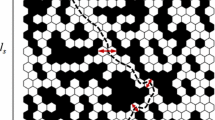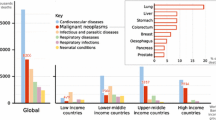Abstract
An automated system (ANET) has been developed to construct interactive maps of microvascular networks, calculate blood flow parameters, and simulate microvascular network blood flow using the geographic information systems (GIS) technology. ANET enables us to automatically collect and display topological, structural, and functional parameters and simulate blood flow in microvascular networks. The user-definable programming interface was used for the manipulation of drawings and data. Visual enhancement techniques such as color can be used to display useful information within a network. In ANET the network map becomes a graphical interface through which network information is stored and retrieved and simulations of microvascular network blood flow are carried out. We have used ANET to study the effects of ionizing radiation on normal tissue microvascular networks. Our results indicate that while vessel diameters significantly increased with age in control animals they decreased in irradiated animals. The tortuosity of irradiated vessels (16.3 ± 1.1 mean±standard error of the mean) was significantly different from control vessels (10.0 ± 1.3) only at 7 days postirradiation. Average red blood cell transit time was significantly different between control (1.6 ± 0.6 s) and irradiated (10.7 ± 5.7 s) microvascular networks at 30 days postirradiation. ANET provides an effective tool for handling the large volume of complex data that is usually obtained in microvascular network studies and for simulating blood flow in microvascular networks. © 1999 Biomedical Engineering Society.
PAC99: 8764-t, 8719Tt, 0705Pj, 8750Gi
Similar content being viewed by others
REFERENCES
Baez, S. An open cremaster muscle preparation for the study of blood vessels by in vivo microscopy. Microvasc. Res. 5:384–394, 1973.
Fajardo, L. F., and M. Berthrong. Vascular lesions following radiation. Pathol. Annu. 23:297–230, 1988.
Gaehtgens, P. Why networks? Int. J. Microcirc.: Clin. Exp. 11:123–132, 1992.
Gretz, J. E., and B. R. Duling. Measurement uncertainties associated with the use of bright-field and fluorescence microscopy in the microcirculation. Microvasc. Res. 49:134–140, 1995.
Hudetz, A. G., A. S. Greene, G. Feher, D. E. Knuese, and A. W. J. Cowley. Imaging system for three-dimensional mapping of cerebrocortical capillary networks in vivo. Microvasc. Res. 46:293–309, 1993.
Johnson, A. I., C. B. Petterson, and J. L. Fulton. Geographic Information Systems (GIS) and Mapping. Philadelphia PA: ASTM, 1992.
Koller, A., and P. C. Johnson. Methods for in vivo mapping and classifying microvascular networks in skeletal muscle. In: Microvascular Networks: Experimental and Theoretical Studies, edited by A. S. Popel and P. C. Johnson. New York: Karger, 1986, pp. 27–37.
Pries, A. R. A versatile video image analysis system for microcirculatory research. Int. J. Microcirc.: Clin. Exp. 7:327–345, 1988.
Pries, A. R., D. Neuhaus, and P. Gaehtgens. Blood viscosity in tube flow: Dependence on diameter and hematocrit. Am. J. Physiol. 263:H1770-H1778, 1992.
Roth, N. M., M. R. Sontag, and M. F. Kiani. Early effects of ionizing radiation on normal tissue microvascular networks. Radiat. Res. (in press).
Slaaf, D. W., T. Arts, T. J. M. Jeurens, G. J. Tangelder, and R. S. Reneman. Electronic measurement of red blood cell velocity and volume flow in microvessels. In: Investigative Microtechniques in Medicine and Biology, edited by J. Chanyen and L. Bitensky. New York: Marcel Dekker, 1984, pp. 327–364.
Taylor, F. D. R. Geographic Information Systems. New York: Pergamon, 1991.
Torres, F. I., F. Z. Cyrino, A. S. Popel, E. Bouskela, and P. C. Johnson. Morphometric analysis of the anastomosing arteriolar network in cat sartorius muscle. Int. J. Microcirc.: Clin. Exp. 14:3–13, 1994.
Unthank, J. L., J. M. Lash, J. C. Nixon, R. A. Sidner, and H. G. Bohlen. Evaluation of carbocyanine-labeled erythrocytes for microvascular measurements. Microvasc. Res. 45:193–210, 1993.
Wu, C. H., and P. C. Johnson. A microcomputer-based system for mapping microvascular networks. Int. J. Microcirc.: Clin. Exp. 8:303–311, 1989.
Author information
Authors and Affiliations
Rights and permissions
About this article
Cite this article
Roth, N.M., Kiani, M.F. A “Geographic Information Systems” Based Technique for the Study of Microvascular Networks. Annals of Biomedical Engineering 27, 42–47 (1999). https://doi.org/10.1114/1.204
Issue Date:
DOI: https://doi.org/10.1114/1.204




